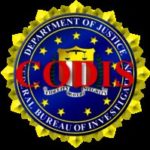DNA Forensic Profiling Anniversaries in June, July

This June and July mark several anniversaries in the field of forensic DNA profiling, so I thought I’d do a little looking back and catching up.
FAMOUS CASES
“DNA Fingerprints: New Witness for the Prosecution” graced the cover of Discover magazine 25 years ago, in June 1988. The story chronicled the first rape conviction based partially on DNA evidence. I wrote it back in the day when a science writer typically juggled several paying assignments. Sigh.
Tommie Lee Andrews was a serial rapist in Florida. The 6-second glimpse that victim Nancy Hodge got wasn’t enough to go to trial, but a new forensic technique, DNA fingerprinting (now called DNA profiling), was just getting underway. After a mistrial when the prosecution was caught off guard concerning the statistics used to interpret the DNA patterns, Andrews was convicted in 1988. I remember his defense attorney contacting me soon after. Mr. Andrews had enjoyed my article and wanted to meet me. I hope he doesn’t get out anytime soon.
July is also the 25-year anniversary of the first use of DNA profiling to convict a killer. George Wesley murdered an elderly, developmentally disabled woman a few miles from where I live, in Albany, NY. The trial went on for months, with DNA experts trotted out because the technology was so new. Wesley was sentenced to 38 years in prison.

The field of DNA fingerprinting/profiling traces its roots to Sir Alec Jeffreys, a geneticist at the University of Leicester, who invented the technique in 1984. “Jeffreys got the idea for the test while looking for genetic variations to serve as markers for inherited disease. It struck him that the techniques molecular biologists use to visualize variation in DNA could also be used to establish identity,” I wrote in Discover.
The case that made Jeffreys and the technology famous and inspired the Andrews and Wesley trials was that of Colin Pitchfork, a 27-year-old baker and father who raped and strangled two 15-year-old girls in the Leicester countryside.
The first convictions-by-DNA hailed from the late 1980s. It took a few more years to see the first exonerations-by-DNA.
The first DNA exoneration happened on June 28, 20 years ago. Kirk Bloodsworth had been on death row following his conviction in 1985 for the rape, sexual assault, and premeditated murder (by strangulation and rock-bashing) of a 9-year-old girl in Maryland. The evidence was a single phone call and eyewitness testimony from 5 people who saw a composite sketch. The death sentence was comminuted to two life sentences.
In 1992, Mr. Bloodsworth read about Colin Pitchfork. Maybe he even read Discover. And he fought to get the semen in the victim’s underwear, which had been mysteriously lost and then found, tested. By 1994, the DNA Identification Act would make such testing much easier. It turned out that the real killer, Kimberly Shay Ruffner, had been imprisoned a floor below Bloodsworth. The freed man went on to become program officer for The Justice Project.
 THE INNOCENCE PROJECT
THE INNOCENCE PROJECT
While Kirk Bloodsworth was educating himself about DNA, Barry C. Scheck and Peter J. Neufeld were founding The Innocence Project, affiliated with the Benjamin N. Cardozo School of Law at Yeshiva University. Since 1992, the project has exonerated 310 people, 18 of whom were yanked from death row. Along the way the cases revealed much about why DNA evidence is needed in the first place:
• Eyewitnesses often misidentify suspects, especially when the accused is of a different race.
• False confessions are coerced from suspects.
• Informants are misinformed.
• Forensic evidence not of the DNA variety is faulty, such as poor matches of shoeprints, hair, and bite marks.
Stats are interesting too. Average time served before DNA exoneration is 13.6 years, and the total years for the 310 falsely-convicted people number 4,135. Average age at conviction is 27 years, and of the 310 cases, the real criminals were found for 152. Only 65% of the 310 received monetary compensation for their lost years, averaging $50k a year. And of the 310 exonerated people, 193 are African-American, 93 white, 22 Latino, and 2 Asian-American.
#310 is Uriah Courtney, for whom June 24, 2013 was a birthday of sorts, when DNA evidence officially absolved him of the crime for which he’d been convicted in 2006 – kidnapping and raping a 16-year-old girl in Lemon Grove, California. “I knew I was innocent, and it was great to have somebody come along who thought that, too, and could actually do something about it,” Mr. Courtney said at a news conference following his release in May, thanking the California Innocence Project.
The rape victim hadn’t seen enough of her attacker to describe him, but she did see a truck, which the unfortunate Mr. Courtney had borrowed from his stepfather. Eventually, DNA analysis of the crime scene semen matched an entry in the state DNA database – and not Mr. Courtney. But it took far too long.
 EVOLUTION OF DNA PROFILING
EVOLUTION OF DNA PROFILING
The version of DNA profiling that Sir Jeffreys used probed “variable numbers of tandem repeats” (VNTRs), which are 10-80 DNA bases long. Today’s DNA profiling uses “short tandem repeats” (STRs), which at 2-10 bases in length are more likely to remain in degraded DNA samples.
The FBI’s Combined DNA Index System (CODIS) is based on 13 STRs, each present in different numbers of copies. The National Institute of Standards and Technology maintains a list of the STRs, which vary so greatly in length that overall they provide the basis for identifying or ruling out individuals. An STR consisting of the DNA sequence GATA, for example, might be present in 9 copies at one point on a particular chromosome in a particular person, and in 10 copies at the matching site on the chromosome’s partner (we have two of each).
Population statistics tell forensic scientists how common each STR is in a suspect’s population group (if that’s known), and using the product rule of multiplying probabilities gives a metric. In this way, by collecting the 26 STR data points, “CODIS blends forensic science and computer technology into an effective tool for solving crime,” according to the FBI. The beauty of the approach in this day of concern over genetic privacy is that repeats identify individuals without revealing traits. But DNA sequences from the Y chromosome and mitochondria reveal gender.

Ironically, the UK discontinued the Forensic Science Service in 2011, prompting Sir Jeffreys to lament that his country has gone from “pole position to banana republic” in the field that he began. But the Alec Jeffrey Forensic Science Institute emerged about a year ago, at the University of Leicester, to make up for the demise of the Forensic Science Service.
AN ENTERTAINING SUPREME COURT DISSENT
Also in June of this year, the Supreme Court weighed in on the matter of DNA profiling, in the case of Maryland v. King. A great summary appears at SCOTUS blog, but it’s worth reading the dissenting opinion for entertainment value, although of course the case itself is anything but funny.
Alonzo Jay King was convicted of rape in 2009 when his DNA matched DNA in the FBI’s trove of unidentified crime scene samples. The FBI has more than 10 million profiles from convicted felons and another 1.5 million from arrestees, but also about half a million dabs of DNA with no matches.
The court argued that taking DNA from King in 2009 to identify him was akin to taking fingerprints — widely accepted, a swish of the inner cheek no more intrusive than inky pinkies. But Justice Scalia argued that the intent was not identification at all, because everyone knew who King was. Scalia evoked the fourth amendment’s “unreasonable search and seizure,” claiming that evidence collected during an arrest must be weapons or material that will degrade, or be relevant to that particular crime.
When I got to Justice Scalia’s dissent, I began to think I was reading something from Bill Maher. The justice details how the 2009 DNA sample, supposedly needed right away to identify the already identified Mr. King, “sat in that office, ripening in a storage area, until the custodians got around to mailing it to a lab for testing.”
Four months later, bingo! The DNA found a hit among the anonymous crime scene samples. And so, Justice Scalia argued, the 2009 DNA didn’t identify Mr. King, but instead, his identity put a name to the cold case DNA stored since 2003.
Wrote Scalia, “No minimally competent speaker of English would say, upon noting a known arrestee’s similarity ‘to a wanted poster of a previously unidentified suspect,’ at (age) 13, that the arrestee had thereby been identified.”
After reviewing the timetable of facts again, Scalia concludes, “it is safe to say that if the Court’s identification is not wrong, there is no such thing as error.” This comment ranks right up there with Bill Clinton’s “It depends what the meaning of ‘is’ is” in order to obfuscate the performance of oral sex.
 So on the philosophical note raised by Justice Scalia, I’d like to end with acknowledging how much we can learn not only from genome sequencing that focuses on the most obvious language told in DNA bases – the protein-encoding parts and their controls — but from the embedded second language of repeats that we still don’t understand. Until we do, however, looking at the way repeats vary among us has opened up the life-saving field of exoneration-by-DNA.
So on the philosophical note raised by Justice Scalia, I’d like to end with acknowledging how much we can learn not only from genome sequencing that focuses on the most obvious language told in DNA bases – the protein-encoding parts and their controls — but from the embedded second language of repeats that we still don’t understand. Until we do, however, looking at the way repeats vary among us has opened up the life-saving field of exoneration-by-DNA.
Great summary of use of DNA for conviction and exoneration
Interesting article, but I feel compelled to correct you: DNA profiling was a case of parallel evolution. The approach used by Lifecodes in the Tommie Lee Andrews trial was based upon hypervariable single-locus VNTRs, which were initially described by Arlene Wyman and Ray White, published in PNAS in 1980. Dr. Jeffrey Glassberg, one of the founders of Lifecodes, saw the forensic potential for these loci several years before Alec Jeffrey’s publications.
Thanks for the correction — I actually remember that paper from 1980. Do you know when the term DNA profiling replaced DNA fingerprinting — or did it? Is one a subset of the other? Instructors using my textbook at some point corrected my use of fingerprinting, but in googling around last week I was unable to find a distinction.
[…] The following article, DNA Forensic Profiling Anniversaries in June, July is reprinted from https://blogs.plos.org, July 11, 2013. […]